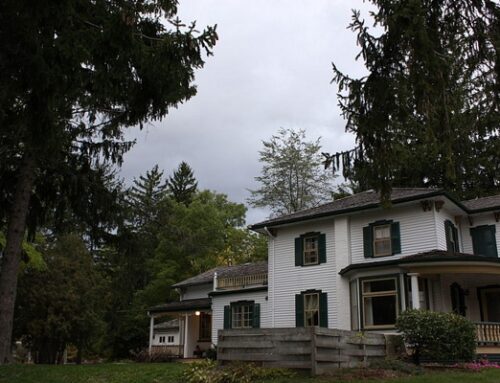Roof repairs aren’t the most budget-friendly things you’d like to encounter at any time. However, your roof completes your family’s shelter and defense against the elements and dangers of the outside. A complete roof inspection checklist makes sure your Clinton Township home is always in top condition. Additionally, it reduces your possible roof repair costs by nailing the small problems that pave the way for more expensive problems in the future.
Should homeowners inspect their roofs on their own? A simple curb observation allows you to see some items on our roof inspection checklist such as moss and other organisms possibly growing on your roof. However, in-depth inspections require a closer look at different parts of your roof. You may see missing shingles from the curb, but it’s truly impossible to see the smallest cracks, curls, or buckles of your roofing shingles.
While it can save you money, don’t let roof maintenance inspections put your life in danger. Some homeowners who feel queasy or hints of nausea or vertigo upon climbing a ladder heading to the roof should leave their roof inspections to qualified and top-tier Clinton Township MI roofers instead. However, if you can manage to get up your roof and walk around safely, then here are a few things you should check to make sure it’s in good condition.
Flashing Condition
Metal flashings across your roof make your roof structures do not let moisture and water into your roof underlayment and sheathing. Flashing corrosion speed varies depending on its manufacturing process and quality. Galvanized flashing can last for decades without any issue. In some cases, flashing may lose nails that secure it in place.
How do professionals inspect their roof’s flashing’s condition? InterNachi has a great elaboration that can help homeowners make crucial and effective inspections below.
Flashing should overlap the roof-covering material, but on asphalt shingle roofs, for aesthetic reasons, the part of the headwall flashing that extends down over asphalt shingles is often covered with a course of shingle tabs.
Don’t mistake this condition for headwall flashing routed beneath the shingles and call it a defect. No minimum headwall flashing dimensions are provided that are applicable to every manufacturer and jurisdiction, so you’re only concerned with seeing that headwall flashing is installed in a manner that will keep the water out. Common flange sizes are 4 inches by 5 inches. Headwall flashing typically comes bent to 120° and can be fairly easily flattened for roofs with shallower pitches.
Occasionally, you’ll see a roof which has had 90°-sidewall flashing installed as headwall flashing. These don’t bend well to accommodate roofs with steeper pitches, and you’ll often see gaps beneath the flashing. Wind-driven rain can enter at these gaps, causing roof leaks. (Continued)
Damaged or Missing Shingles
During windy or really intense rainstorms, asphalt shingles can get knocked out of place. Sometimes, the sudden shift of cold and hot weather can make them buckle or curl. As we mentioned earlier, while you can spot missing asphalt shingles right from the curb, you’ll need to climb up to see the smallest problems a roof can possess.
Certainteed has a detailed article on asphalt shingle roof curling and cracking. Read more about it below.
From the safety of the ground or through a window, perform a visual inspection of the roof with binoculars. Remember: A roof is designed to age over time. Even a one-year-old roof will look different than a roof that was just installed. But by inspecting your roof regularly, you can spot changes and potential problems.
Look for shingles that are missing or loose, or show signs of heavy wear or degradation (bald spots, granule loss, or severe curling), as these are considered weak points where water can penetrate and cause leaks. While it is normal for asphalt shingles to experience some curling, significant or abnormal curling are indicators that your shingles are reaching the end of their useful life.
GETTING A CLOSER LOOK
After a preliminary inspection from the ground a closer look may be necessary. Safely climb a ladder to get a closer look at your roof. But stay off the roof itself — not only is it dangerous to walk on the roof, you can potentially do more damage to the shingles.
INSIDE-OUT
After examining the roof from the outside, it’s time to check things from inside. Armed with a flashlight, inspect the attic and crawl spaces after heavy rains. Do you notice any signs of water damage? Are any of the rafters or decking wet? Has any of the insulation gotten wet? These are all indications that your roof may have a leak. (Read More)
Moss and Lichen Growing on Roof
A crucial part of any roof inspection checklist is spotting any form of moss or lichen growth on your roof. Asphalt shingle are made from petroleum, but with the presence of moisture, it can become a habitat for different organisms. You can easily clean moss and lichen by using a water hose, cutters, and a mop to remove it.
However, a massive growth of moss, lichen, and other organisms on your roof is a sign it may need replacement soon. It is a clear sign of penetration that requires immediate redress or replacement.
If you have yet to find a convenient roof maintenance service, you can contact Miller’s Home Improvement to help. We have decades of experience in providing roof maintenance that prevents any expensive roof repair or replacement in the future. Contact us today to learn more!






